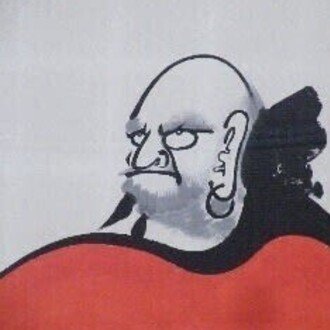
畳にも日本の伝統技術の神髄が見える。<温山荘園追想> The essence of traditional Japanese technology can be seen on tatami mats.
先日、煎茶会の下見で和歌山県海南市にある、国の名勝「琴ノ浦温山荘園」を訪ねた。
この建造物は元々、ゴム製品をグローバルに展開するニッタ株式会社の創業者、新田長次郎翁の別荘だったところ。個人所有だったとはとても思えない1万8千坪の広大な庭園の中に主屋、茶室、浜座敷など様々な建物が点在する。現在は公益財団法人が設立され管理されている。
The other day, we visited the national scenic spot "Kotonoura Onzansoen" in Kainan City, Wakayama Prefecture, for a preview of the Sencha party. This building was originally the villa of Chojiro Nitta, the founder of Nitta Corporation, which develops rubber products globally. Various buildings such as a main house, a tea room, and a beach room are scattered in a vast garden of 18,000 tsubo, which is unlikely to be privately owned. Currently, a public interest incorporated foundation is established and managed.
それらの建造物や庭園は明治の終わり頃から大正初期にかけて建造、造園されたもので、随所に日本の伝統的な技術、知恵が生かされた建築物やモノがたくさんある。以前に紹介した浜屋敷の襖絵も貴重な文化財である。
その中で、写真にある「畳」もその一つ。過去に見たことがない畳の形状に驚いた。通常の畳とは少し違う。まず幅が広い。そして中央部分が微妙に盛り上がっている。一緒に視察した茶室や和建造物の手掛ける専門家によると、畳の中央部が、い草が織りあい重りあって継がれているので少し盛り上がっているという。
This is the tatami mat of the "Middle Rokuhaiomote (Middle tatami)". The "Middle tatami" is short because it uses only the thick part of the rush shaft, that is, the good part. It is connected from both sides of the tatami mat at the center of the weave.
The general tatami mats are 95 cm wide, the Yonhai tatami mats are 101 cm, and the Rokuha tatami mats are 106 cm. In the main building of Onzanso, there was a tatami mat called the Middle Rokuhaiomote.
これを「中継ぎ六配表(中継表)」の畳ということである。「中継表」というのは、い草の軸の太い部分、つまり良い部分だけを使うため短いものになってしまう。それを畳の両サイドから織り中央部で継いだものである。
畳は一般的なものが95㎝幅、四配といわれるものが101㎝、六配が106㎝。温山荘の主屋には中継六配表という畳が敷かれてあった。
These buildings and gardens were built and landscaped from the end of the Meiji era to the beginning of the Taisho era, and there are many buildings and things that make use of traditional Japanese techniques and wisdom. The fusuma paintings of the Hamayashiki introduced earlier are also valuable cultural assets.
Among them, the "tatami" in the photo is one of them. I was surprised at the shape of the tatami mat that I had never seen in the past. It is a little different from normal tatami mats. First of all, it is wide. And the central part is slightly raised. According to the experts who worked on the tea room and Japanese-style building that we visited together, the central part of the tatami mat is a little swelling because the rushes are woven together and spliced together.

中継ぎ六配表 畳 (幅106㎝)
こういった畳が使われているのは、ほとんどが国宝や重要文化財に指定されている建造物。温山荘は、最高の技術を駆使して造り上げられている大正初期の建物なので、細部にわたりこだわりがみえる。畳も去ることながら、襖、障子、硝子の形状や材料なども粋を極めている。
This time, I did a little research on the "tatami" that attracted my interest. It seems that the rush producing area in the Bingo region of Hiroshima prefecture has long been used as the finest. In the olden days, tatami mats with could only be woven by hand-weaving machines. With hand weaving, you can only weave a few pieces a day. It is said that there are no hand-woven craftsmen now. I heard that a company in the Bingo region is currently developing its own "power Middle rokuhaiomote " machine, which is useful for the production and restoration of tatami mats used in cultural properties in Japan.
今回は、興味を惹いた「畳」を少し調べてみた。い草の産地として広島県備後地方のものが昔から最高級のものとして使われていたようだ。中継ぎ六配表の畳は、昔は手織り機械でしか織ることができなかった。手織りだと1日2、3枚しか織れない。今では手織り職人さんもいないという。
現在は備後地方の企業が「動力中継ぎ」の機械を独自で開発し、日本国内の文化財等で使用される畳の生産や修復に役立っているという話を聞いた。
Most of these tatami mats are used in buildings designated as national treasures and important cultural properties. Onzanso is a building in the early Taisho era that was built using the best technology, so you can see the attention to detail. While leaving the tatami mats, the shapes and materials of the sliding doors, shoji screens, and window glass are also extremely stylish.

日本の伝統文化は、中国大陸から伝承されたものが多いが、畳、襖や障子は日本古来の独特のものである。しかし、現在の生活空間にはそういうものがほとんど使われなくなっている。こういう機会を得て、畳や障子、襖がある空間に身を置くと、なぜか身も心も落ち着く。
Many traditional Japanese cultures have been handed down from mainland China, but tatami mats, sliding doors and shoji screens are unique to ancient Japan. However, such things are rarely used in the current living space. If you take this opportunity and put yourself in a space with tatami mats, shoji screens, and sliding doors, you will feel calm for some reason.
※この記事は、2016年9月「心と体のなごみブログ」に掲載されたものをリライトし転載
レポート & 写真 / 渡邉雄二 場所 / 琴の浦温山荘園 Reported & Photos by Yuji Watanabe
いいなと思ったら応援しよう!

